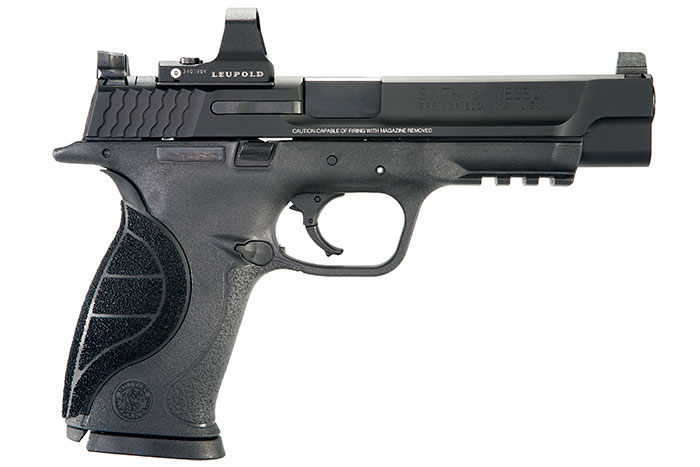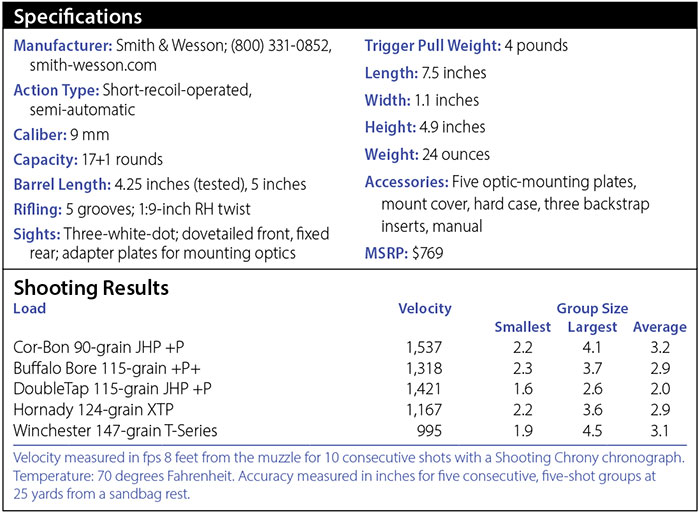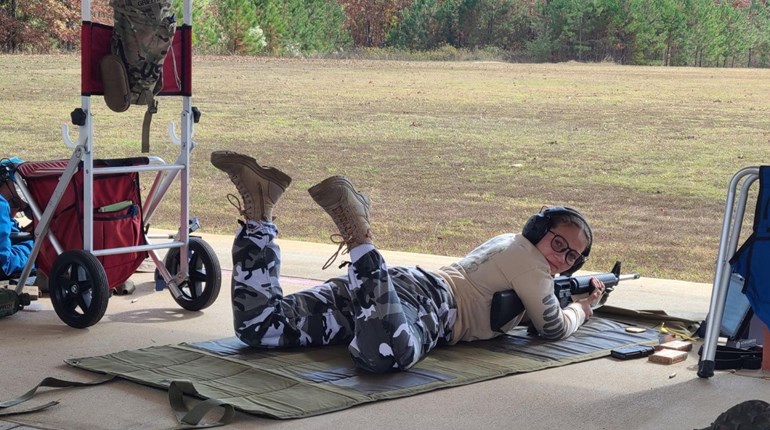** When you buy products through the links on our site, we may earn a commission that supports NRA's mission to protect, preserve and defend the Second Amendment. **
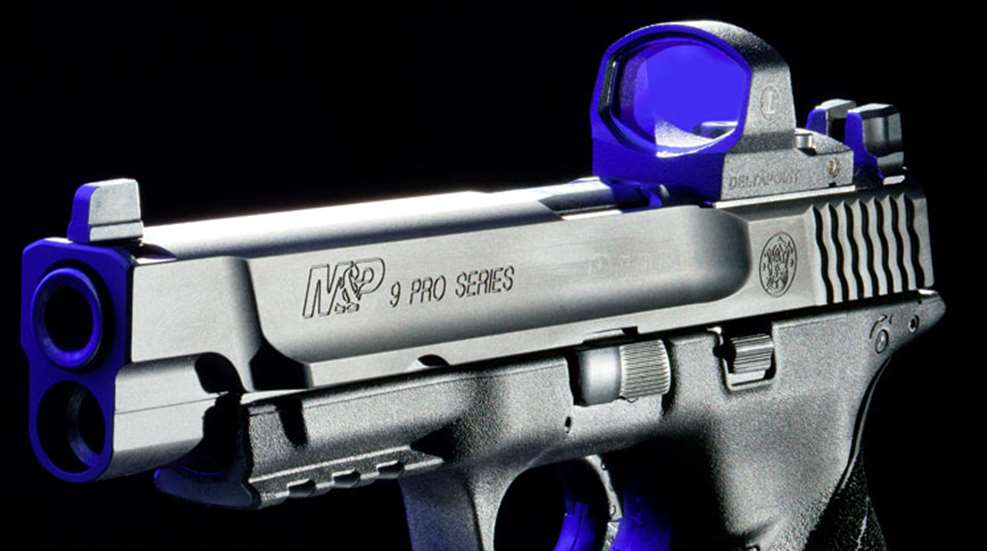
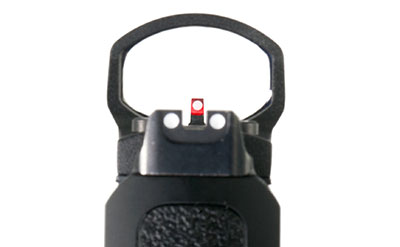
Unlike other M&P variants, the C.O.R.E. features high-profile sights, which allow them to co-witness with certain red- dot optics.
Over the years, there have been additional chamberings offered, plus compact versions and stretched competition models. Just recently, Smith & Wesson decided to configure the pistol for optics, and the company approached this change like it approached the original design of the M&P—designers thought about what features a variety of shooters might want. This relatively new model is the M&P Pro Series C.O.R.E. (Competition Optics Ready Equipment).
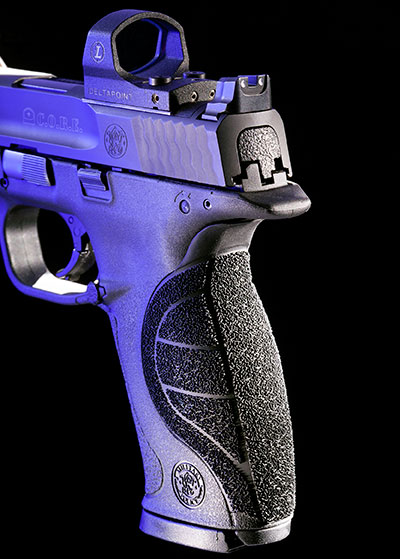
Aggressive texturing on the Palmswell grips keeps the pistol anchored firmly in the shooter’s hand.
If you’re thinking it’s no big deal to put optical sights on a competition pistol, you’re right—gunsmiths have been modifying pistols for more than three decades to accept these sights. What Smith & Wesson has done is offer a factory pistol delivered with a variety of mounting hardware to accept a half-dozen micro red-dot sights from as many manufacturers, while leaving the iron sights on the gun. If you can turn a screwdriver, you’ll be able to install your choice of tiny optic with ease on a factory model of a very popular handgun.
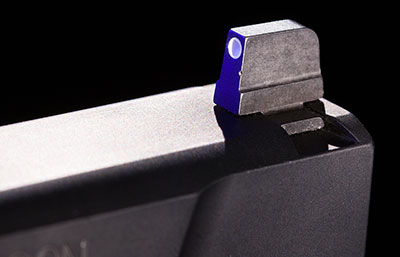
Despite its design to accept optics, the C.O.R.E. sports iron sights, which can serve in either the primary or backup roles.
The iron sights on the C.O.R.E. are different from standard M&P-series pistols. Both the front and rear sights sit much higher above the slide, with the rear sight being thinner from front to back. The sights were not tall enough to be seen through the window above the MRDS’s housing, but they can be seen through the glass of the Leupold Delta Point and some of the other, smaller offerings. This is a subject of importance to someone new to pistol optics, and we’ll come back to it later. A change to the rear sight was dictated by the fact that the slide cut for the optic’s mounting base extended rearward into the rear sight dovetail cut on existing M&Ps. The dovetail iron sight cut on the C.O.R.E. was reduced in size, moved rearward on the slide, and a flat face was put on the front of the new, taller rear sight. With the optics removed, the slide can be cycled by pushing the rear sight against any reasonably firm surface, and with a red-dot sight installed, the C.O.R.E. can be cocked by pushing the large vertical front face of the optic against a firm surface. This is a nice survival feature on a defensive pistol, and while Smith & Wesson says the C.O.R.E. is a competition-ready pistol, the M&P is equally a fighting handgun.
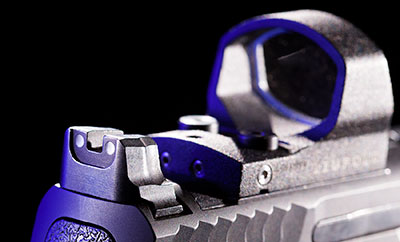
Despite its design to accept optics, the C.O.R.E. sports iron sights, which can serve in either the primary or backup roles.
Equipped with iron sights only, I like the high, flat front of the C.O.R.E. rear sight, since it allows the slide to be racked one-handed in the event of injury. In a properly designed holster, the higher sights pose no problem during the draw stroke. The three-white-dot system employed is not my favorite, but I can’t criticize the C.O.R.E. for these since they are the same sights on stock M&Ps and a number of other duty pistols.
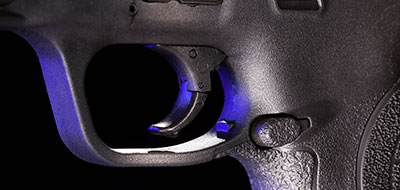
The standard M&P trigger broke at 4 pounds.
In a close-range encounter with a handgun, I find iron sights to be quicker. My opinion is shared by a couple of instructors who teach defensive-pistol skills rather than competitive shooting. However, things change as engagement ranges increase. It takes longer to make a good hit on a distant target with iron sights, and the red-dot optic makes precision hits easier and faster for most shooters. In competitive shooting, the pure-speed shoots and longer-range events are dominated by optics, but to my knowledge, none of these events require concealment.
Smith & Wesson chose to call the new optically equipped M&P a “competition-ready” pistol consistent with the fact that most of the input for the design came from competitive shooters. I don’t know whether or not the company has received any interest from police agencies regarding the use of optics on duty pistols. Certainly, the minimal size and weight of today’s red-dot optics don’t preclude the use of such accessories. And the fact Smith & Wesson is building the C.O.R.E. capability on both the duty-size 4.25-inch M&P as well as the longer 5-inch-barreled model suggests additional possibilities. Only time will tell whether or not the C.O.R.E. makes a dynamic intrusion into the police and self-defense market, but anything that makes us shoot better deserves a close look. Besides, what could be a more important competition than a gunfight?
